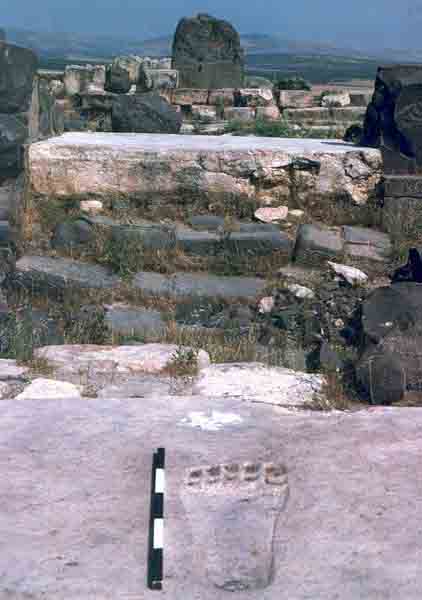Image Details

A. M. Appa
Divine footprints? Three 3-foot-long footprints are carved into the limestone slabs lining the floor of the temple portico. The delicate carving is designed to look as if the prints were impressed into the stone by an extra-human figure striding into the temple. The single left footprint from the portico appears in the foreground of this photograph, which looks across the antechamber, over a second threshold to the main hall. A single right footprint (not visible) is carved into this latter threshold.
Throughout the ancient Near East, temples were considered the dwelling places of gods. The Jerusalem Temple, for example, was known in Hebrew as Beit Yahweh, the House of Yahweh. These footprints—a very unusual image in ancient Near Eastern art—are probably intended to indicate the presence of the deity who resided in the ‘Ain Dara temple.
